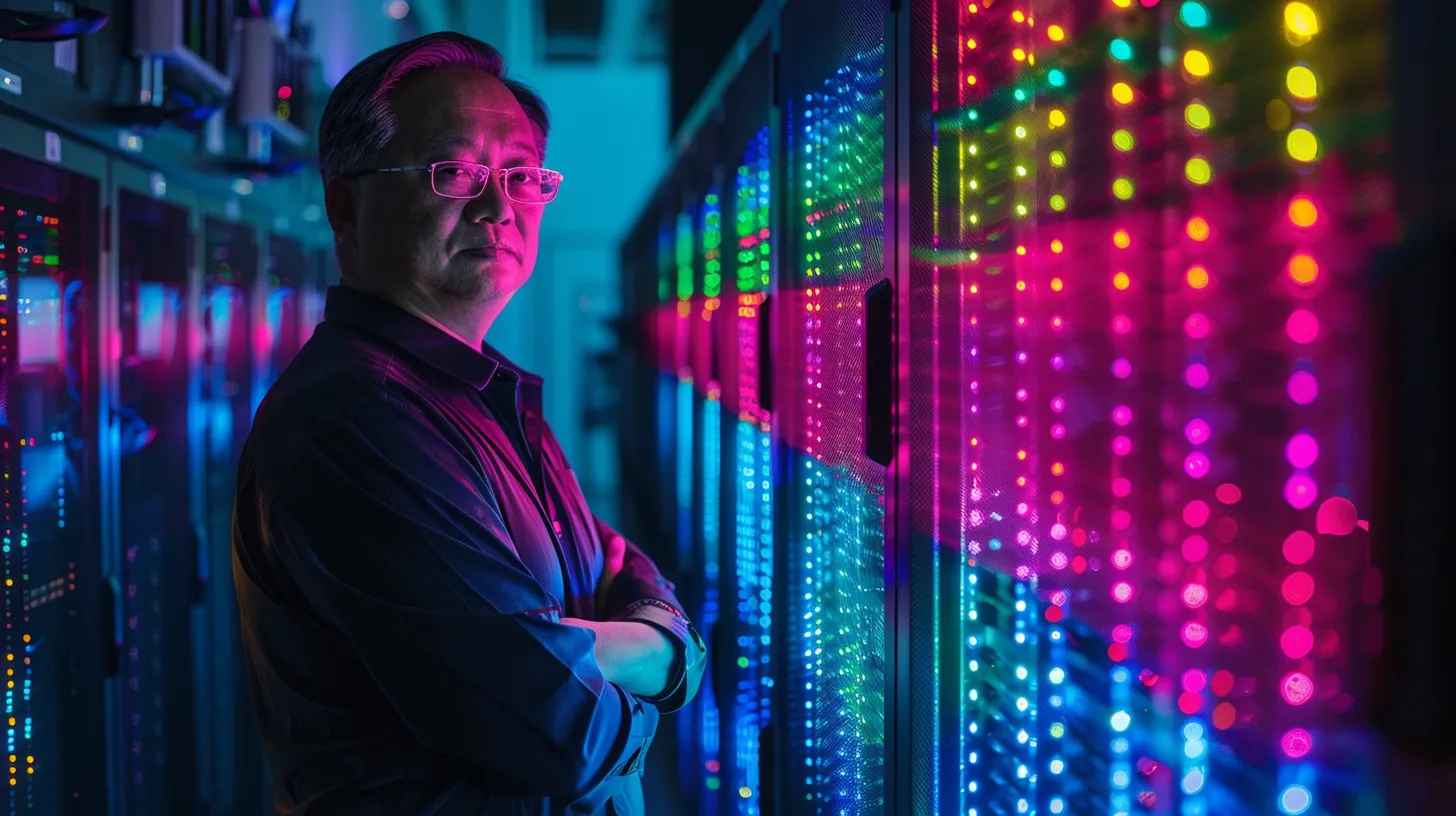GTC 2024: Nvidia's Quantum Leap into the Future of AI

Nvidia’s annual GTC conference, held this year in San Jose, California, has once again proven to be a watershed moment for the fast-paced world of artificial intelligence. As the tech giant unveiled its latest innovations, it became clear that the company is not merely keeping pace with the relentless progression of AI - it is actively shaping the very contours of its future.
At the heart of Nvidia’s bold vision lies a suite of groundbreaking technologies, each designed to push the boundaries of what is possible in the realm of large language models, generative AI, and high-performance computing. Chief among these are the company’s new X800 series of networking switches, which represent a quantum leap in terms of raw performance and scalability.
The Quantum-X800 InfiniBand and Spectrum-X800 Ethernet platforms are engineered to handle the staggering computational demands of AI workloads at an unprecedented scale. Boasting end-to-end throughput of up to 800Gb/s, these switches are the first of their kind, capable of supporting the training and inference of AI models with trillions of parameters. This is a critical milestone, as the voracious appetite of cutting-edge language models and generative AI systems has outpaced the capabilities of existing networking infrastructure.
Nvidia’s senior vice president of Networking, Gilad Shainer, articulates the significance of this breakthrough: “NVIDIA X800 switches are end-to-end networking platforms that enable us to achieve trillion-parameter-scale generative AI essential for new AI infrastructures.” In other words, these switches are not merely incremental improvements, but a transformative leap that will underpin the next generation of AI-powered applications and services.
But the impact of Nvidia’s GTC announcements goes far beyond raw performance. The company has also forged a strategic partnership with Microsoft that promises to reshape the AI landscape in profound ways. Through this collaboration, Nvidia’s groundbreaking technologies, including the Grace Blackwell GB200 processor and advanced Quantum-X800 InfiniBand networking, will be seamlessly integrated into Microsoft Azure, the tech giant’s cloud computing platform.
This integration will pave the way for the widespread adoption of large language models, computer vision, and speech recognition capabilities, as Microsoft’s customers will have access to a comprehensive suite of AI infrastructure and tools. Satya Nadella, Microsoft’s chairman and CEO, captures the significance of this alliance, stating, “Together with NVIDIA, we are making the promise of AI real, helping drive new benefits and productivity gains for people and organisations everywhere.”
The implications of this partnership extend beyond the cloud, as Nvidia and Microsoft also announced the expansion of their services for healthcare providers. This move underscores the growing importance of AI in transforming the delivery of medical care, from drug discovery to personalized treatment plans.
Nor is Nvidia’s influence limited to the realm of enterprise and industrial applications. The company’s new Omniverse Cloud API, which will be integrated into Microsoft’s digital twin offerings, promises to revolutionize the way businesses and individuals interact with virtual environments. By seamlessly blending the physical and digital worlds, these tools will enable the creation of highly immersive, data-driven simulations that can inform decision-making, optimize processes, and even enhance the consumer experience.
Yet, Nvidia’s ambitions stretch far beyond the immediate future. The company has also unveiled a 6G research cloud platform, a bold initiative that aims to shape the next generation of wireless communication technologies. By leveraging the power of AI, this platform will explore ways to enhance the performance, security, and sustainability of 6G networks, laying the groundwork for a future where ubiquitous connectivity and intelligent infrastructure are the norm.
This long-term vision is emblematic of Nvidia’s enduring commitment to innovation and its deep understanding of the pivotal role that AI will play in shaping the technological landscape of the decades to come. As Jensen Huang, Nvidia’s founder and CEO, aptly stated, “AI is transforming our daily lives --- opening up a world of new opportunities.”
Yet, with great power comes great responsibility, and Nvidia is acutely aware of the ethical implications of its work. The company has made a concerted effort to address concerns around the potential misuse of AI, with a focus on developing trustworthy and transparent systems that prioritize privacy, security, and the well-being of end-users.
This commitment to responsible innovation was evident in Nvidia’s announcements regarding its BlueField-3 SuperNIC technology, which is designed to provide advanced security features and performance isolation for multi-tenant AI environments. By ensuring that each tenant’s workloads are shielded from one another, Nvidia is helping to mitigate the risks of data breaches, performance degradation, and other potential pitfalls that can plague shared computing infrastructures.
As the AI landscape continues to evolve at a breakneck pace, Nvidia’s role as a technological trailblazer has become increasingly vital. The company’s ability to anticipate and address the industry’s most pressing challenges, from scalable networking to ethical AI development, positions it as a driving force behind the realization of the AI-powered future.
Indeed, the announcements made at GTC 2024 serve as a clear testament to Nvidia’s unwavering commitment to pushing the boundaries of what is possible. By forging strategic partnerships, developing cutting-edge hardware, and crafting a comprehensive software ecosystem, the company is positioning itself as an indispensable ally for organizations and individuals seeking to harness the transformative power of artificial intelligence.
As the AI Weekly Report looks ahead to the coming years, it is clear that Nvidia’s influence will only continue to grow, shaping the trajectory of technological progress and, in the process, redefining the very nature of what it means to be human in an increasingly AI-driven world.